Positive Health Online
Your Country

Nutritional and Environmental Approaches to Infertility
by Jaqueline Johnson(more info)
listed in women's health, originally published in issue 58 - November 2000
The problem is that the public at large are completely unaware that there are very natural and cheaper ways to overcome an infertile state or a pregnancy-related problem.
Thanks to the tireless efforts of Foresight, and associated professionals, such information is increasingly available to the public. Wouldn't it be nice to see this information in doctors' surgeries and schools?
A letter from Dr Neil Ward (Director of Research, Chemistry, University of Surrey) to the Journal of Nutritional and Environmental Medicine in 1995, on behalf of Foresight (the pre-conceptual care society), stated:
"Out of the 367 couples, 217 with a history of reproductive problems, 89% of women had become pregnant. 327 children had been born since enrolment, with no multiple pregnancies. All babies were born healthy and well developed at between 36-41 weeks. None were transferred to special care baby units...."
The work carried out by Foresight has done much to make all of us realize that a simple return to the remedies and solutions offered by nature itself goes a long way to putting right what ails us, sparing many people the agony of childlessness, or a tragic outcome to pregnancy.
Reproductive, and pregnancy-related problems in humans, are not experienced in isolation. For many years now, scientists have been reporting not only that increasing numbers of animal species have become extinct, but that reproductive failure amongst species, ranging from fish to birds, whales to otters to crocodiles, is causing grave concern. Birth defects, sexual abnormality, unusual diseases and serious burns to the skin of water creatures have been causing concern for decades.[1],[2]
Nature is about synergistic survival. We humans are part of nature as surely as if we were bound to the earth by roots. We are part of the tapestry that has woven everything together.
With multiple factors affecting our ability to reproduce, disturbingly we do not have to look very far to appreciate the very insidious perpetrator that threatens the survival, of all species on the planet.
However, the chilling discoveries within the animal kingdom have a human correlation – in falling male sperm. Research shows that the culprits are chemicals from our industrialized world that block or mimic the hormone oestrogen![1],[2]
The effect of chemicals acting as oestrogen mimics on the endocrine system can contribute to a relative excess of oestrogen, specific to fertility issues. The unhealthy effect of excess oestrogen would be discouraging to conception, and include the stimulation of cell growth into tumours in female reproductive organs, increased cardiovascular problems and tissue damage.[1],[2]
Tests on human cell cultures showed that exposing a foetus to a billionth of a gram in the first weeks of pregnancy would have serious health effects. For instance, when a can of baked beans is heated to 250 degrees to sterilize the food, enough Bisphenol-A leaches into the liquid to give the humans eating them, a dose of 90ppb. And when relative amounts were given to mice in the first seven days of pregnancy, male offspring had enlarged prostates and a reduced sperm count.[3]
Nearly 40 years ago, Rachel Carson published Silent Spring, presenting an amalgam of research detailing the consequences of widespread pesticides released into the environment. Her pioneering work showed that the control of agricultural pests was having an impact far beyond the field being sprayed.[4]
Unfortunately, the chemicals we are intent on destroying ourselves with are in the very electrical appliances we take for granted in our homes. Phthalates, for example, are found in washing machines, fridges, televisions and telephones.[5]
The track record of humanity suggests an overriding need for caution, as the law of unintended consequence states that we can never be sure of long-term outcomes.
Hormone-disrupting chemicals act broadly and insidiously to sabotage fertility and development.
|
Examples of Falling Male |
||
| 50% 25% 25/30% |
50 years 20 years 20 years |
Denmark Edinburgh Paris |
Forty percent of infertility relates to the male:[3]
- immunological factors i.e. antibodies working against sperm;
- infected sperm;
- viscosity problems;
- low sperm;
- poor motility;
- abnormal sperm;
- prostate disorders;
- chemical toxicity and heavy metals;
- poor nutrition
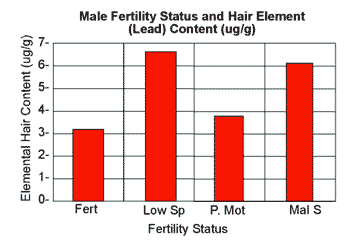
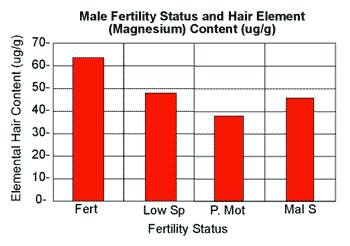
Agricultural Chemicals
Hormone mimickers have been with us for 50 years, ever since the advent of DDT. The early DDT-based chemicals were banned in the USA in 1971. The UK only offered a voluntary ban in 1974. Third-world countries continue to use them. Lindane is still used in head-lice and scabies treatments, agro and garden pesticides and wood preservatives and their residue is still found in the food chain. A MAFF survey of 50 infant foods detected 18 out of 31 samples of infant rusks and cow's milk contained high levels of these kinds of chemicals. These chemicals are carcinogenic, mutagenic and teratogenic. Organo chlorine (OC) pesticides have oestrogenic properties.[3],[6],[7] All are related to:
- miscarriage;
- precipitate labour;
- decline in sperm quantity and density.
New research published (Daily Mail, 14 July 1999) revealed that chemicals which mimic oestrogen are leaking into our drinking water, reinforcing the link to low sperm count, deformed sexual organs and testicular cancer. The report, commissioned by the government's watchdog, is the first 'official' proof that tap water could be such a source. Pipe linings, resins and solvent-based cements release high levels of alkyl phenol (an oestrogen mimic), used by water companies and plumbers, and are the main source of the health risk. Other concerns involve the side effects of man-made chemicals from glues, detergents and industrial waste. Findings showed that just one rubber seal released six different hormone disrupters. Pesticides are contaminating 298 water supplies in the UK.
While we are still on the subject of male infertility, another revealing article (Daily Mail, 28 March 2000) disclosed that a chemical called HPTC, a by-product of methoxychlor, a DDT replacement (on the grounds that it is safer!), is routinely sprayed on fruit and vegetables. Also an endocrine disrupter, it lowers the male hormone testosterone. Another reason why you should switch to organic food!
Women can be forgiven for thinking they are doing enough to ensure the health of their unborn child: avoiding x-rays, pesticides and other toxic chemicals, and exercising care over what they eat and drink. Short-term caution will certainly protect the foetus from many kinds of permanent damage, including the devastating neurological affects of alcohol.
But new generations need to be vigilant against hormone-disrupting chemicals, because the dose reaching the womb depends not only on what the mother takes in during pregnancy, but on the persistent contamination accumulated in body fat up to that point in her lifetime.[3] This in-built chemical, foetal gestational transfer, provides a toxic burden, the biochemical implications of which will determine what kind of legacy we are passing on to our children.
Smoking
The thousands of dangerous chemicals in tobacco (and social drugs) are now a matter of record. Did you know that recently the American Tobacco industry, under pressure from the FDA, released a secret list of nearly 600 new and dangerous chemicals, amongst which are insecticides and ammonia?[8]
The chemicals in tobacco cause:
- low birth weight;
- perinatal mortality;
- stillbirth;
- spontaneous abortion;
- infertility.
Mutagenic damage is caused to sperm, i.e. chromosomal aberration, leading to severe limb deformity in offspring. Nicotine alone leads to ineffective sperm development, causing foetal abnormality.[9]
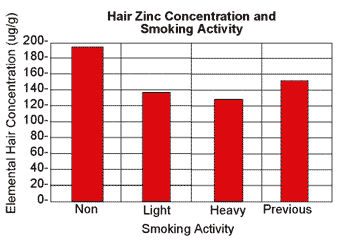
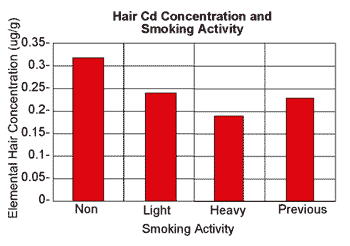
Cadmium and Lead
Although all toxic metals are a problem to the developing foetus, cadmium (main source: cigarettes) and lead (main source: the atmosphere, old water pipes, solder, seams on food cans) cause major concern. Cigarette smoking increases the uptake of lead by 25%. Between them they are responsible for:
- infertility;
- miscarriage;
- prematurity;
- low birth weight;
- perinatal death and malformation;
- stunted growth;
- co-ordination difficulties/learning difficulties.
Cadmium is embryo toxic in animals, and some develop toxaemia. It accumulates in the placenta, causing necrosis, and easily crosses the placental barrier to the foetus. As the placenta is such a rich source of nutrients and facilitates nutrient transfer to the foetus, the nutritional status of the unborn child will diminish, rendering it more susceptible to harm.
Diets low in minerals, particularly calcium, iron, zinc and manganese, enhance the uptake of lead and cadmium. The fact that toxic metals can be removed from the body by nutrients suggests that nutritional status is important.[3],[10],[11],[12]
Alcohol
Alcohol is our most favourite of all the social poisons. And it is a poison at every level. How much you drink is only your affair, but if you are planning a baby that you do not wish to damage, neither partner should drink for four months before conception takes place. A mother should not consume it during pregnancy and breast-feeding. Let me tell you why.
The teratogenic effects of alcohol cause chromosome abnormality, the severity of which is dependent on dose and time of exposure. Alcohol is a low molecular substance that can cross the placental barrier and enter the foetus, providing it with the same dose of alcohol as the mother.[3],[13]
Excessive amounts of alcohol consumption in the first 21 days can cause miscarriage, because the blastocyst is not properly embedded in the uterus at this time. By the 36th day, long before the woman is aware of the fragile life she is carrying, the neural tube is present and open with rudimentary organs. Teratogenic action at the time can cause heart, brain and limb malformations, without giving any outward sign of foetal alcohol syndrome (FAS) when the child is born.
A single episode of heavy drinking by the mother at about the time of conception severely damages chromosomes to one-fifth of eggs, resulting in spontaneous abortion or death shortly after birth.
Once teratogenesis takes effect there is no stopping it. Having damaged the early foetus, there is a perverse continuity of metabolic and congenital events, which perpetuates through every moment of the gestation period.
Alcohol is a direct testicular toxin, causing atrophy of the seminiferous tubules, loss of sperm cells and an increase in abnormal sperm with poor motility and output. It is a strong Leydig cell toxin having an adverse effect on testosterone metabolism. Leydig cells are located in the testis and are the primary site of testosterone biosynthesis. Sterility affects 80% of alcoholic men and alcohol is the most common cause of male impotence.[3],[14]
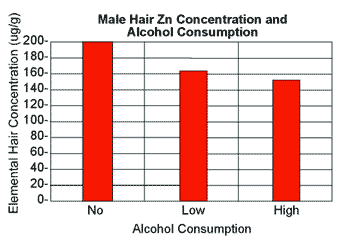
Foetal Alcohol Syndrome – (FAS) and Foetal Alcohol Effect (FAE)
Culmination of research has recognized a condition associated with maternal gestational alcoholism, called FAS. It results in:
- prenatal growth deficiency;
- weight and length of head abnormality, which can be so severe it requires hospitalization;
- an inability to thrive for life, despite being reared in an ideal nutritional and social environment.
FAS has far-reaching effects throughout the future development of the offspring, including behaviour, varying degrees of mental handicap and low IQ. It is responsible for at least 10% of all congenital abnormalities.
The characteristics of FAE are less severe and much more subtle. (For further, more comprehensive details contact Foresight.)[15]
No parent in their right mind would ever administer alcohol (or cigarettes for that matter) to an infant. They are more than aware of the damage that can be done to a baby. Or are we suggesting, then, that it is safer to give it to a developing foetus?
Genitourinary Tract Infections (GTIs)
Chlamydia trachomatis in women can result in cervicitis, endometriosis, acute salpingitis and pelvic inflammatory disease (PID). As well as ectopic pregnancy, perinatal mortality and spontaneous abortion, it is directly implicated as one of the most common causes of infertility. In men this infection causes infertility and sub-infertility.[16]
Screening for GTIs is extremely important, as these infections are often the cause of infertility. From 109 patients who attended the Foresight clinic, 76 had infections and some had several concurrent infections.[3]
The list of GTIs is a comprehensive one and can be obtained from Foresight.
Nutrition – The Way Forward[3]
Nutritional programmes include attention to:
- the assessment of toxic exposure and accumulations;
- the endocrine system;
- the eradication of intestinal candidiasis and parasites;
- allergy/food sensitivity;
- stress levels;
- the elimination of common social toxins, cigarettes, drugs, alcohol.
Nutrient loss due to smoking and alcohol is now well documented.
Generally a change in diet means:
- a wholefood diet of organic foods, wherever possible, with no chemical additives;
- fresh vegetables, fruits and salads daily, with as wide a selection as possible;
- good quality, reared organic protein, including the regular consumption of oily fish;
- using only a filtered water supply;
- using only cooking utensils and pans, etc., made from inert metals or glass;
- the removal of alcohol and tobacco of any kind.
Is organic food better? Yes! Simply put, you are not only reducing your toxic load, but ensuring a good, balanced intake of organic minerals and other nutrients. What you are not getting are agro pesticides and chemical fertilizers, which do little for the nutrient content of the product and present you with a cocktail of endocrine disrupters and carcinogens.
Research shows that every single vitamin, mineral or fatty acid deficiency has its own pathogenesis. Each nutrient is a co-factor to another. Scientists illustrate to us that an interruption of this synergy caused by a deficiency, for example, of folic acid, can have devastating results, not only to the developing foetus, but to any one of us. We are seeing this more often with a higher incidence of infertility and, in the case of folic acid, neural tube defects, and, less well known, it is needed for zinc metabolism, haemoglobin synthesis with help from B12, antibody production, the formation of red blood cells in bone marrow and much more.[17]
Because the reasons for low mineral status, nutrient deficiencies generally and toxicity can be multiple, a qualified practitioner is needed to investigate all imbalances thoroughly and formulate a prioritized programme to overcome your problems.
For instance, vitamin E, and often B12, is found to be low in an infertile male, i.e. low sperm count. But a high proportion of malformed sperm is related to low zinc, selenium, calcium, magnesium and potassium, particularly in the presence of lead.
Essential fatty acids are particularly important. The brain is made up of 60% lipase, and fatty acids are the building blocks of membranes in brain structure. They are also essential for optimum functioning of the endocrine system, and, to illustrate the model of co-dependency further, zinc deficiency interferes with fat metabolism, and vitamin B6 is needed to make use of fatty acids and many amino acids, for nerve and muscle function, and so on.[17],[18],[19]
Every patient presents differently and their biochemical needs are different. It is for this reason that all programmes are different. For instance a couple who came to me for help were both infertile. Having spent a great deal of money on infertility treatments, and still having problems, they decided to try a different approach.
Both had a high incidence of toxic metals. Lead was very high in the male, but, using kinesiology testing, I found nickel to be the priority metal, and used the following to remove all metals:
- homeopathic nickel (which also dealt with the other metals);
- selenium chelate;
- yellow dock (for circulating metals);
- supported the liver and adrenals.
The male patient's digestive status was poor due to the heavy metals in his gut and his stress levels. Tests showed that he was deficient in a number of nutrients, which caused further digestive problems. This was dealt with later using hydrochloric acid, pepsin and digestive enzymes for a short time, which improved his absorption of nutrients. I continued to prescribe liver and adrenal support, due to his history of stress. The client was particularly deficient in vitamin E, essential fatty acids, some of the B vitamins, magnesium and zinc. All were prescribed in accordance with kinesiology testing.
His wife, equally stressed, had high levels of nickel, lead and cadmium. She was not a smoker. Further investigation showed that she had intestinal parasites and candidiasis. The parasites were eliminated first, then the candidiasis. Removal of the heavy metals came next, prioritized and dealt with in the same way as her husband. The initial protocol for the female patient also included B complex vitamins, digestive enzymes, and adrenal and liver support.
Both patients had food sensitivities, which were dealt with as part of the protocol.
The male patient underwent further sperm tests after treatment, and, to his absolute joy, found them to be normal. Not only did this couple successfully conceive, but the female patient is now studying nutritional medicine. I think she was convinced, don't you?
This is only an indication of the kind of work that may be needed to overcome your problems. Some patients test fine for heavy metals, but not for Candida, for instance, and certain nutrient deficiencies.
Once testing shows that nutrient and endocrine status has been restored, a maintenance programme is put together to accommodate the individual needs of that patient, commensurate with the prospect of pre-conception.
The information and facts presented here may be alarmist, even apocalyptic. But facts are not fate. Thanks to people like Rachel Carson, her Silent Spring did not become fact, because what she did and said made a difference, and her warnings were heeded. Others have taken up the mantle, which means that environmental trends can be reversed. There is astounding research now in adaptive biology and nutritional biochemistry that will in the future show us the way forwards, so we do not continue to fly blind through an atmosphere of biologically active compounds.
No one has the right to change the earth's atmosphere and alter the chemical environment in the womb of every unborn child. As we are a more enlightened society that believes in freedom of choice more than ever, the most profound and selfless thing any prospective parent can do is to extend that freedom of choice to their unborn child.
References
1. Cadbury. Feminisation of Nature Ch 1. Penguin. 1998.
2. Colbourn Theo. Our Stolen Future Ch 1. Little, Brown and Co. 1996.
3. Bradley. Foresight – Preparation for Pregnancy Argyle Publishers. 1995.
4. Carson Rachel. Silent Spring Ch 12. Penguin. 1965.
5. Foresight newsletters. Glenville. 2000.
6. MAFF Working Party on Pesticide Residues. 9th report. 1977-81.
7. Male Reproductive Health and Environmental Oestrogens. Lancet 345: 933-35. 1995.
8. Brodie. Tobacco Moguls – "cigarettes not addictive". The Times 15 April 1994.
9. Hemsworth. Deformation Mice Foetus and Male Ingestion Nicotine. IRSC Med Sc 9: 728-29. 1981.
10. Smoking Effect on Placental and Fetal Zinc. Am J Obstet Gynecol 157: 1241-46. 1987.
11. Carmichael. Teratogenicity, toxicity, Perinatal Effects of Cadmium. Human Toxicology 1: 159-186. 1982.
12. Tuormaa. Adverse Effects of Lead. J Nut Med 4: 449-61. 1994.
13. Streissguth. Neurobehavioral Effects of Prenatal Alcohol. Neurotoxic and Teratology 11: 461-476. 1989.
14. van Thiel. Experimental Model, Hypogonadism in Alcoholic Man. Gastroenterology 69: 326-32. 1975.
15. Streissguth and LaDue. FAS and FAE: Teratogenic Causes of Mental Retard/Developmental Abilities. American Ass on Mental Defic pp1-32. 1987.
16. Tuormaa. Adverse Effects GTI Infect, in Pre-concept Care and Infertility. J Nut Med 4: 351-61. 1994.
17. Jennings and Heinemann. Vitamins in Endocrine Metabolism. Med Press 1972.
18. Weiss and Beaconsfield. Herbal Medicine Arcanium Press. 1988.
19. Golan. Optimum Wellness Ballantyne Books. 1995.
Comments:
-
No Article Comments available